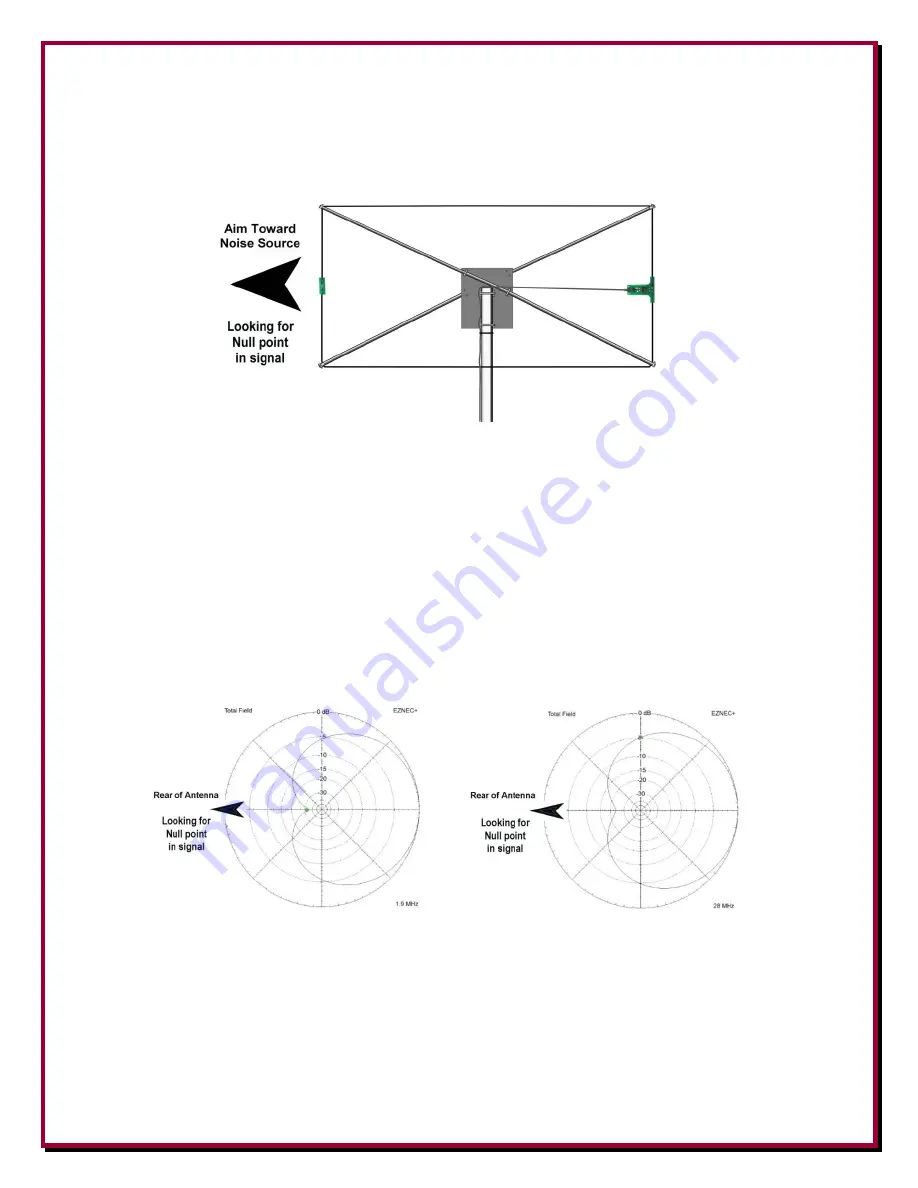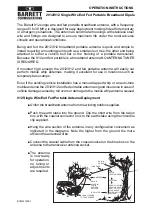
- 10 -
The DXE-NOISELOOP is directional. The
rear
of the antenna is toward the smaller resistor PCB.
This would be the maximum
null
point (unlike a regular antenna where you are normally looking
for a peak signal). The front of the antenna is by the larger PCB that holds the transformer. When
tracking down an offending signal, using the null will allow you an easier method to determine the
direction.
When testing was being done at DX Engineering, an ICOM IC-705 was used because that radio is
portable, easy to use and has the ability to display the selected spectrum display as an added feature
when tracking down an offending HF signal.
Holding the DXE-NOISELOOP vertically with the radio attached and tuned to the HF band desired,
rotate the antenna until there is a
null
(not the peak) in the selected, desired noise frequency.
Moving 90 degrees away from your current position, then turning the antenna again to null the
desired noise frequency, will allow you to triangulate the spot that the interfering signal is coming
from. The rear of the antenna produces a sharp null when pointed at the signal of interest and the
sharp null is often used for direction finding versus using the broad peak which occurs when the
front of the antenna is pointed at the signal of interest.
Plots showing 1.9 MHZ and 28 MHz - note the null points
If you have a problem with AM broadcast adding additional interference, the optional
DXE-NL-
PRE-ATT-1
Noise Loop has extra filtering built in. When the AM Filter is turned on, you will see
a large decrease from offending AM Broadcast signals.






























